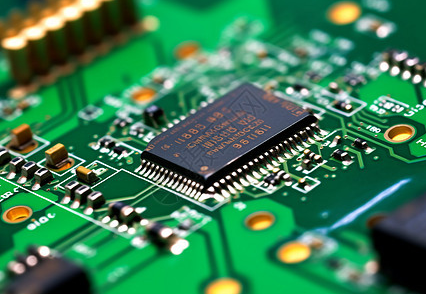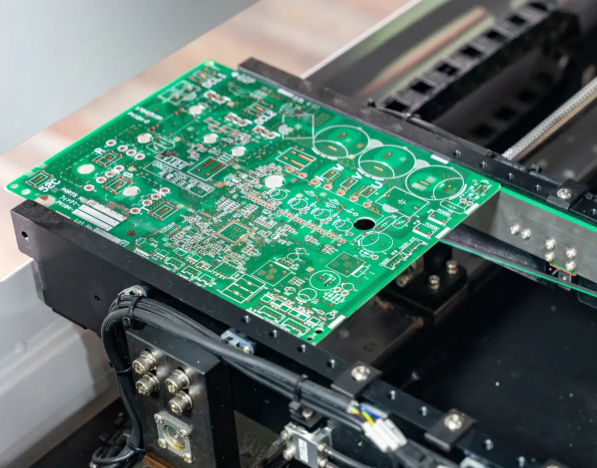Understanding the Shelf Life of Electronic Components
Introduction
In the fast-paced world of electronics manufacturing and design, the shelf life of electronic components is a critical yet often overlooked factor. It refers to the duration during which a component can be stored under specified conditions and still meet its performance specifications when put into use. Ignoring this aspect can lead to increased failure rates, costly rework, and project delays. As technology advances and supply chains become more complex, understanding and managing component shelf life is paramount for ensuring product reliability and longevity. This article delves into the key factors influencing shelf life, best practices for storage and handling, and methods to mitigate risks associated with aging components.

Main Body
Part 1: Key Factors Influencing Shelf Life
The shelf life of electronic components is not a fixed number; it varies significantly based on several intrinsic and extrinsic factors. Moisture sensitivity is one of the most critical factors, particularly for surface-mount devices (SMDs). Components are often rated with a Moisture Sensitivity Level (MSL), which indicates how long they can be exposed to ambient air before baking is required to remove absorbed moisture. If exceeded, this can lead to “popcorning” during reflow soldering, causing internal cracks and failures.
Another major factor is oxidation of terminations, especially on leads and pins. Components with tin or silver finishes are susceptible to oxidation when exposed to humid air, which can impair solderability over time. This results in poor wetting during assembly and weak solder joints. The type of packaging also plays a role; components sealed in moisture-barrier bags with desiccants have a much longer shelf life than those stored in open trays or non-protective environments.
Temperature fluctuations during storage can accelerate aging processes. High temperatures can degrade organic materials within components, such as adhesives or encapsulants, while low temperatures might make plastics brittle. Additionally, electrostatic discharge (ESD) risks must be managed, as improper handling can damage sensitive semiconductors instantly or over time through latent failures. Lastly, the chemical composition of materials used in components, like electrolytic capacitors with liquid electrolytes that can evaporate or dry out, directly determines their usable life span.
Part 2: Best Practices for Storage and Handling
To maximize the shelf life of electronic components, adhering to strict storage and handling protocols is essential. Proper environmental control is the cornerstone; storing components in a cool, dry place with stable temperature (typically between 15°C and 25°C) and low humidity (below 60% RH) can significantly extend their usability. Using climate-controlled warehouses or cabinets is highly recommended for sensitive parts.
Moisture barrier bags (MBBs) with desiccants and humidity indicator cards are standard for moisture-sensitive devices. Once opened, components should be used within their MSL timeframe or rebaked according to manufacturer guidelines to restore solderability. For long-term storage, nitrogen-filled cabinets can prevent oxidation by creating an inert atmosphere around components.
Handling procedures must include ESD protection measures, such as using grounded workstations, wrist straps, and antistatic packaging, to prevent damage from static electricity. Inventory management is also crucial; implementing a first-expiry-first-out (FEFO) system ensures that older components are used before newer ones, reducing the risk of deploying expired parts. Regularly auditing storage conditions and monitoring component dates codes help maintain an efficient stock rotation.
For businesses looking to streamline their component sourcing while ensuring quality, platforms like ICGOODFIND offer valuable resources by connecting buyers with reliable suppliers who adhere to these best practices, thus mitigating risks associated with component aging.
Part 3: Mitigating Risks and Testing Aged Components
Despite best efforts, components may still age beyond their ideal shelf life. Proactive measures are necessary to mitigate associated risks. Electrical testing is a primary method; using multimeters, LCR meters, or automated test equipment (ATE) can verify if aged components still meet electrical parameters such as resistance, capacitance, or leakage current. For semiconductors, curve tracers or parameter analyzers can detect shifts in performance.
Solderability testing is vital for through-hole and surface-mount parts. Methods like wetting balance tests or dip-and-look inspections assess how well terminations accept solder, identifying oxidation issues. If failures are detected, reconditioning processes such as baking (to remove moisture) or tinning (to restore solderable surfaces) can sometimes rejuvenate components, though this must be done carefully to avoid further damage.
In cases where components are suspected of being near or past their shelf life, burn-in testing under elevated stress conditions (e.g., high temperature and voltage) can accelerate failure mechanisms, helping weed out weak parts before assembly. Establishing a qualification process for aged components—where samples are tested rigorously before full deployment—adds a layer of security. Collaboration with trusted partners like ICGOODFIND can facilitate access to testing services and certified components, ensuring that only reliable parts enter production lines.
Conclusion
The shelf life of electronic components is a multifaceted issue that demands attention from designers, procurement specialists, and manufacturers alike. Factors like moisture sensitivity, oxidation, and storage conditions directly impact component reliability and performance. By implementing robust storage practices, such as environmental control and proper packaging, and adopting rigorous testing protocols for aged components, businesses can avoid costly failures and ensure product quality. Platforms like ICGOODFIND play a supportive role in this ecosystem by providing access to verified components and expertise. Ultimately, prioritizing shelf life management not only safeguards against risks but also enhances overall operational efficiency in the electronics industry.











